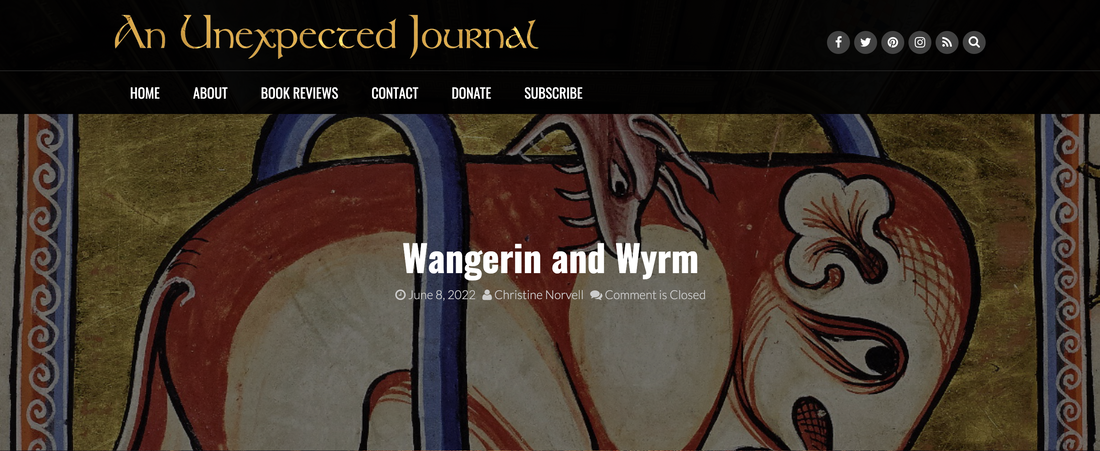|
In the beast fables The Book of the Dun Cow and The Book of Sorrows, Walter Wangerin, Jr. crafted a living bestiary complete with a great and cosmic evil, one he carefully chose -- I discarded the notion of a human enemy, as it is in Watership Down since humans in that fantasy seemed, to me, to trouble the human reader’s ability to identify with the animals. I rejected next the notion that the enemy would arise from the animal kingdom itself since I wanted this to be evil, “das ding an sich” the thing itself rather than bad animals. Finally I hit upon the acceptable notion: that my evil would be framed in the solid, complex history of myth.[1] Thus Wangerin chose a creature that, by its nature, had always existed. The Wyrm of Old English and Old Saxon lore became a literal gargantuan worm trapped in the bowels of the earth, much like the Jörmungandr of Norse mythology. Wangerin says, “The apple has a grub in it, the earth a tapeworm.”[2]
Though many bestiaries date back a full millennium or more, the Aberdeen Bestiary from the year 1200 AD describes similar dragon-type creatures with explicit teaching. Wangerin employs the serpent of old, the medieval snake or dragon of the Aberdeen Bestiary, “a viper that pours out its poison,” a living thing that preys upon hope, spewing doubt into the minds of the creatures of the earth.[3] "Of the dragon: The dragon is bigger than all other snakes or all other living things on earth. For this reason, the Greeks call it dracon: from this is derived its Latin name draco. The Devil is like the dragon; he is the most monstrous serpent of all; he is often aroused from his cave and causes the air to shine because, emerging from the depths, he transforms himself into the angel of light and deceives the foolish with hopes of vainglory and worldly pleasure. The dragon is said to be crested, as the Devil wears the crown of the king of pride. The dragon’s strength lies not in its teeth but its tail, as the Devil, deprived of his strength, deceives with lies those whom he draws to him."[4] Wangerin’s Wyrm must tempt and deceive God’s creatures if he is ever to escape his prison, but first Wangerin introduces us to his menagerie above the earth’s crust, borrowing from Geoffrey Chaucer’s The Nun’s Priest’s Tale.
0 Comments
Your comment will be posted after it is approved.
Leave a Reply. |


 RSS Feed
RSS Feed